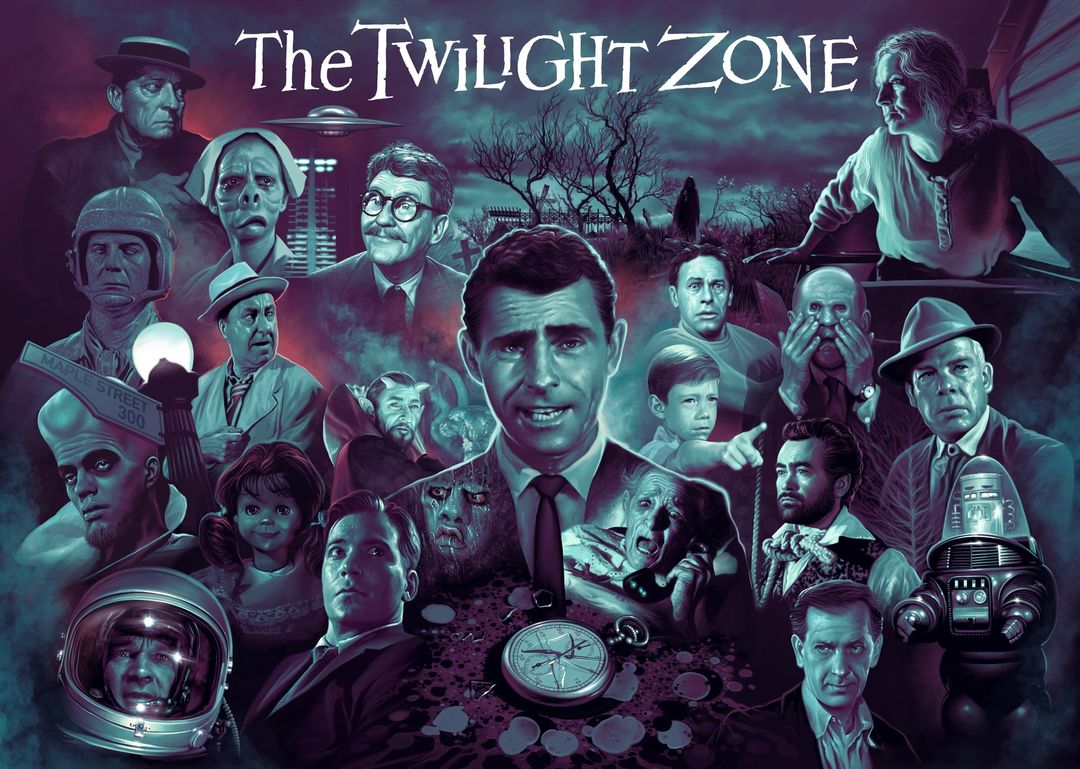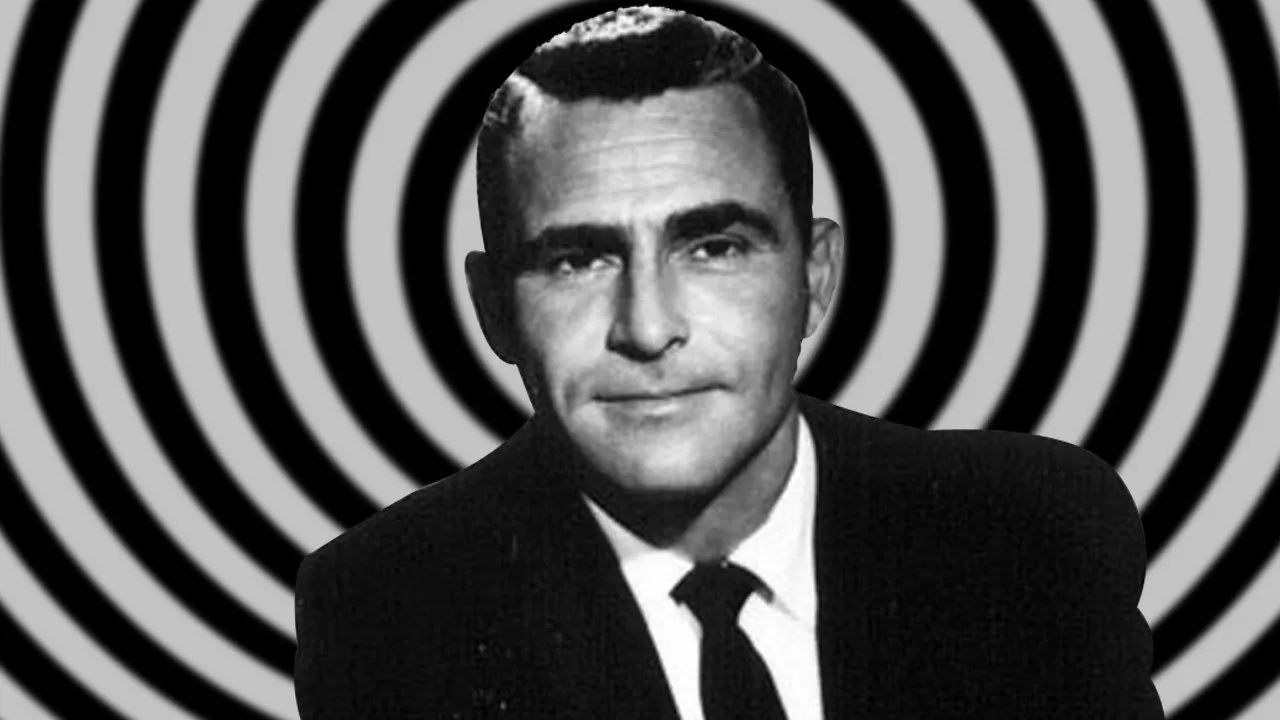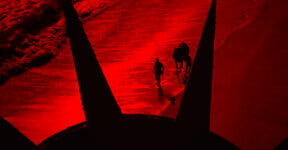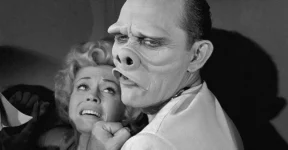With very few exceptions, no show throughout the entire history of television has lingered in the imagination and captivated the audience quite like Rod Serling’s The Twilight Zone. For nearly five years, from October 1959 to June 1964, story after story in the anthology series delivered smart examinations of the moral complexities and human behavior in modern society through an entertaining format wrapped in sci-fi packaging.

The Twilight Zone was created by Rod Serling (also credited as the executive producer). Throughout its run, it had four producers, including Buck Houghton (1959 – 1962), Herbert Hirschman (1963), Bert Granet (1963 – 1964), and William Froug (1963 – 1964).
Writers
Rod Serling was the most prolific writer for the show, creating the scripts for 91 (of 156) episodes. Some of the most prominent names to contribute to the scriptwriting work include Ray Bradbury, Richard Matheson, Charles Beaumont, Earl Hamner Jr., Jerry McNeely, Frederick Louis Fox, George Clayton Johnson, and Martin M. Goldsmith, among others. The opening and closing narrations were also provided by Rod Serling to summarize events of the episode.
The Twilight Zone was perhaps the most famous anthology series ever on TV. Most episodes were pure fantasy, while others could be easily categorized under the science fiction genre. The pilot episode “Where is Everybody?” perfectly encapsulated the basic format of every episode that followed. It started with an opening narration before the actual story began. An unexpected plot twist came at the end, and then a closing narration wrapped up the episode. Nearly all 156 episodes showcased a plot line filled with unusual circumstances to keep the audience thinking of the answers to the mysteries presented to them.
Despite having its fair share of sci-fi and fantasy clichés, every episode looked fresh with new topics to explore each week, yet familiar at the same time thanks to the recognizable format. That being said, it would be impossible not to notice how some episodes felt more polished than the others, simply because the show didn’t have a dedicated team of writers. Many of the better quality and most memorable ones were written by Richard Matheson, for example:
- Steel (Season 5, Episode 2): Lee Marvin was a manager of a robot boxer. He was forced to take the robot’s place in a fight because the robot broke down.
- Little Girl Lost (Season 3, Episode 26): a child was trapped in a strange dimension under her bed. Her parents could hear her crying, but they could not reach her.
- Nightmare at 20,000 Feet (Season 5, Episode 3): a man on an airliner saw a mysterious creature on the wing, but no one else did. The creature did exist.
Another great episode was I Sing the Body Electric, written by Ray Bradbury. It was about a robot grandmother who gave love and affection to real human beings as much as she received from them.
Of course, those episodes were only a fraction of all the memorable stories The Twilight Zone offered. In fact, the entire series was unforgettable because it made TV great. It ran endlessly in syndication for two decades following the cancellation, and finally resulted in an anthology film, Twilight Zone; The Movie, directed by Stephen Spielberg, John Landis, George Miller and Joe Dante. The film comprised remakes of four stories from the original series, written by John Landis, George Clayton Johnson, Jerome Bixby, and Richard Matheson.
The Twilight Zone was immensely popular to where there have been three attempts to revive the show in 1982, 2002, and 2019. None of those were as successful as the original, unfortunately.
Directors
Even before The Twilight Zone premiered, Rod Serling said something to the effect that the show would be written, directed, and acted only by the best in the TV industry. Just like with the writers, The Twilight Zone had several directors to give as much flair and unique touches to the show as possible. Among the most notable directors include:
- James Sheldon will be forever known for his trademark “You’re a bad man” scenes that never failed to capture the tension.
- Douglas Heyes insisted on the between-the-pillars scene in The Howling Man and successfully delivered the chill.
- Abner Biberman implemented the tilted camera angle and eventually made the alley sequence in The Dummy a highlight point.
- Richard Donner gave just the right amount of style in Nightmare at 20,000 Feet that it became a staple in popular media.
And so on. While the episodes vary in quality, not a single one was below expectation.
We think there was never a secret ingredient that made The Twilight Zone as memorable as it was. You could probably say the show implemented the most basic formula of them all: excellent writing, supported by brilliant directing, and all-around professional acting. Thankfully for the audience, Rod Serling – a genius screenwriter himself – made good on his promise to bring only “television’s elite” to work on the show. And those elites were indeed up to the task. To some extent, Serling actually made it easy on himself because as soon as he hired the best people for the job, he turned them loose to do whatever they believed to be appropriate for the script. The Twilight Zone remains one of the few sci-fi shows that never relied heavily on VFX and instead focused on what mattered the most: storytelling that could relate to the audience’s viewpoints. As a result, you can watch the episodes now, and they won’t look as outdated as you might think.
Who was your favorite character from The Twilight Zone? Do you think Twilight Zone: The Movie is as well-made as the series? We’d love to hear from you.
Other Things You Might Want to Know
What was the reason for the show’s cancellation?
CBS announced the cancellation of The Twilight Zone in late January 1964. Jim Aubrey, then the network executive, claimed that the show had become too expensive to produce, and the ratings weren’t high enough to justify the cost. In a publication by the Daily Variety, Serling offered a counter-argument that the network didn’t cancel the show, but he canceled the network. Following the news, ABC showed interest in hiring Serling to write a horror series “Witches, Warlocks and Werewolves,” but he wasn’t interested.
Which actor made the most appearances in The Twilight Zone?
Robert McCord appeared in more episodes than any other actor in the series. He made at least 67 appearances, although many of them were uncredited.
What was Rod Serling’s TV project after The Twilight Zone?
Serling sold his share in the series (about 40%) to CBS after the cancellation. His next big TV series was Night Gallery, which aired on NBC for three seasons with 43 episodes, and focused on horror stories and macabre. Rod Serling didn’t have as much control over the series as he had earlier over The Twilight Zone, but he was a major contributor to the scripts.
Check out other articles by month:







